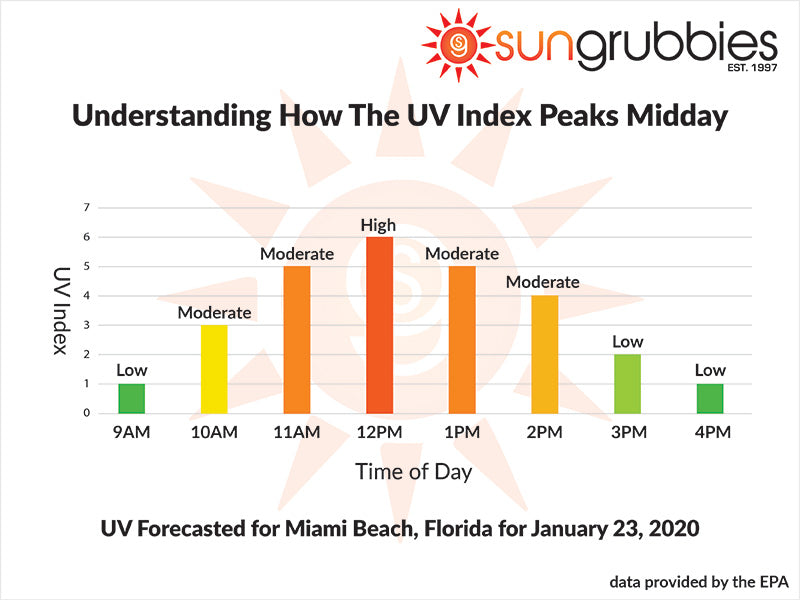Understanding The UV Index
Why was the UV Index Developed?
In 1994, the National Weather Service (WSA) and the Environmental Protection Agency (EPA), jointly decided to create the UV Index to help Americans plan for outdoor activities and avoid overexposure to harmful UV radiation. The risks to overexposure to UV radiation include, and are not limited to, skin cancer, cataracts, premature aging, and even immune system suppression. There are also many people that have diseases that are exacerbated by UV radiation exposure, such as those that suffer from Lupus. These agencies jointly formed the index, to predict the level of UV exposure for the following day at noon (even though the level may rise or decrease throughout the day, the benchmark is for noon), is to be reported on a scale of 1 to 11 +.
On this scale, 1 signifies the lowest amount of UV radiation exposure and 11+ indicates the highest risk of overexposure. It can be noted that at approximately 3 hours after and at 3 hours before noon, this UV index figure is reduced by half.
The UV Index is included alongside other weather reporting across all forms of mediums that normally report weather conditions such as the Weather Channel, newspapers, and broadcast media as an important planning tool (i.e. depending on the Index, parents may want to be extra prepared with sunscreen and sun hats for their children or to avoid being outside during peak UV radiation hours).
What factors can influence or affect the UV Index?
- The Season: Statistically the UV Index is highest in Summer, followed by Spring, Fall, and lastly Winter.
- Time of Day: The intensity of UV radiation is the highest at Solar Noon, which is usually somewhere between noon and one when the sun is exactly at 90 degrees down to earth and highest in the sky, beating down directly at you. An example of this can be seen below:

- Latitude: The closer you are to the equator, the higher the chance of UV radiation. As you move away from the equator towards the North and South Poles it decreases.
- Altitude: UV Radiation goes up as you go higher because air at higher altitudes is thinner and has easier penetrability.
- Land Cover: Structures like buildings and large trees can block some radiation.
- Cloud Cover: UVA/UVB radiation levels are at their highest on cloudless days, but can still maintain dangerous levels despite cloud coverage due to the scattering of radiation by water molecules and other atmospheric particles.
- Global Warming: Increases in pollution, dust, cloud cover, smoke from wildfires, and other airborne and waterborne particles related to climate change does decrease UV penetration somewhat. Decreased stratospheric ozone however allows more of the harmful UVB rays (higher frequency wavelengths) to reach the earth’s surface and cause DNA damage to plants and animals.
- Water/Snow/Sand: Be cautious as these three can amplify UV Radiation with a “bouncing” off reflective effect.
Ultraviolet radiation, commonly referred to as UV radiation, is emitted constantly from the sun. It has an overall wavelength range between 100 and 400 nanometers (nm) which is divided into three sections: UVA (315-400 nm), UVB (280-215 nm), and UVC (100-180 nm). The earth surrounding atmosphere absorbs approximately all UVC radiation and about 90% of UVB radiation. The UV radiation that reaches the earth's surface is composed of mostly UVA radiation with small measurements of UVB.
The following is a table depicting the UV Index and its categories according to the rate of exposure. This table also includes possible solutions developed by the Environmental Protection Agency to aid in reducing UVA and UVB exposure:











This does not aid in understanding the inner workings so to speak, just the dangers and action to prevent them.
Leave a comment